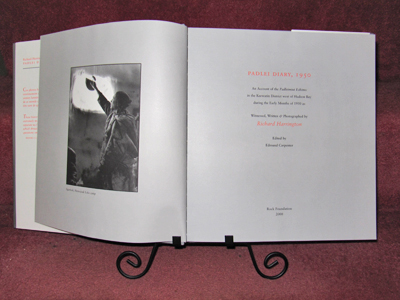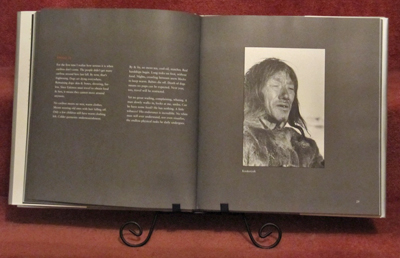From the Editor
Passage - Siu-Ling Han
Passage - Benson E. Ginsburg
Building & Testing Astrup's Dog Sled
The Arctic Nomads Project
Zacharias Kunuk’s Latest Film
The Chinook Project’s 2016 Wellness Clinics in Canada’s North
Canadian Inuit Dogs I have owned, raised and trained: a photo essay; Part 4
Book Review: Padlei Diary
Index: Volume 18, The Fan Hitch
Navigating This Site
Index of articles by subject
Index of back issues by volume number
Search The Fan Hitch
Articles to download and print
Ordering Ken MacRury's Thesis
Our comprehensive list of resources
Defining the Inuit Dog
Talk to The Fan Hitch
The Fan Hitch home page
Editor: Sue Hamilton
Webmaster: Mark Hamilton
The Fan Hitch, Journal
of the Inuit Sled Dog, is published four
times a year. It is available at no cost
online at: https://thefanhitch.org.
The Fan Hitch welcomes your letters, stories, comments and suggestions. The editorial staff reserves the right to edit submissions used for publication.
Contents of The Fan Hitch are protected by international copyright laws. No photo, drawing or text may be reproduced in any form without written consent. Webmasters please note: written consent is necessary before linking this site to yours! Please forward requests to Sue Hamilton, 55 Town Line Rd., Harwinton, Connecticut 06791, USA or mail@thefanhitch.org.
This site is dedicated to the Inuit Dog as well as related Inuit culture and traditions. It is also home to The Fan Hitch, Journal of the Inuit Sled Dog.
The Fan Hitch welcomes your letters, stories, comments and suggestions. The editorial staff reserves the right to edit submissions used for publication.
Contents of The Fan Hitch are protected by international copyright laws. No photo, drawing or text may be reproduced in any form without written consent. Webmasters please note: written consent is necessary before linking this site to yours! Please forward requests to Sue Hamilton, 55 Town Line Rd., Harwinton, Connecticut 06791, USA or mail@thefanhitch.org.
This site is dedicated to the Inuit Dog as well as related Inuit culture and traditions. It is also home to The Fan Hitch, Journal of the Inuit Sled Dog.

Padlei Diary
An account of the Padleimiut Eskimo in the Keewatin District west of Hudson Bay during the early months of 1950 as witnessed, written & photographed by Richard Harrington
edited by Edmund Carpenter of the Rock Foundation
reviewed by Sue Hamilton
Richard Harrington (1911-2005) emigrated to Canada in his teens. Although he became a renown photographic chronicler of people and places world-wide, Harrington may be best remembered for the years (1948-1953) he lived and traveled with Canadian Inuit who referred to him as “Adderiorli” – the man with a box. With his camera Harrington documented aboriginal life at a point in time on the verge of looming change for these arctic People.
Harrington journeyed to the camps of the Padleimiut, Inuit living about 124 miles north and west of what is now the community of Arviat, in the Keewatin District of Nunavut, a region to the west of Hudson Bay. These “People of the Willow” were also known as Caribou Inuit. Living far inland, their survival depended not on sea animals, but on tuktu. By the time Harrington arrived in early 1950, he found the People starving. The caribou had migrated too far away for Padleimiut to harvest.

Disturbing photographs of Padleimiut, some of them hours from death, accompanied Harrington’s article, “Starvation Camp”, which appeared in the Toronto Star after the photojournalist’s return to southern Canada. The story elicited a public outcry which, in turn, has been suggested as the Canadian government’s motivation for taking action in the North. In his later books, The Face of the Arctic (1952)1 and The Inuit: Life as It Was (1981)2, Harrington observed, “…These pictures would, I hope, show the outside world what real suffering was…And yet the people did not complain, whine, pray or beg…They would also show the strength, endurance, courage and ingenuity of an almost exhausted people….Stoically, they accepted a fate that was always nearby. As far as possible, they tried to continue their normal way of life....”

Anthropologist, archaeologist and authority on Arctic peoples (University of Toronto, State University of California), Edmund “Ted” Carpenter (1922-2011), did ethnographic fieldwork in the Canadian Arctic in 1951-1955. In the year 2000 Carpenter, an officer of the Rock Foundation, edited and published Padlei Diary: An account of the Padleimiut Eskimo in the Keewatin District west of Hudson Bay during the early months of 1950 as witnessed, written & photographed by Richard Harrington3. Its dramatically presented and uncluttered black and white images are intimate yet respectful, poignant yet often distressing. They bear witness to the dying, as well as to their way of life. The minimalist text gives way to the messages conveyed by the photographs themselves.
Padlei Diary is an exquisitely crafted, museum quality, hundred-ninety 12.1 x 11.3 x 0.9 inch page volume. It’s the kind of book whose page-turning recommends that hands first be washed and dried. Only one thousand copies were ever printed (in a single edition), and as a hard cover only. It is occasionally found for sale, and nearly always as used, by antiquarian booksellers. Depending on it’s condition, a copy may or may not include the original dust jacket and sturdy gray slip case. Very rarely, a new copy still in its original shrink wrap may be offered.
Ed: The Fan Hitch has donated a copy of Richard Harrington’s Padlei Diary to the community of Arviat where it will be available to “bring back memories to many of the older folks in the community and will give the younger ones a glimpse at another period in local Inuit history”
1The Face of the Arctic: A Cameraman’s Story in Words and Pictures of Five Journeys Into The Far North, Richard Harrington; 1952; Henry Schuman, publisher; ASIN:B001158CGM
2The Inuit: Life as It Was, Richard Harrington; 1981; Hurtig Publishers; ISBN-13:978-0888302090
3Padlei Diary: An account of the Padleimiut Eskimo in the Keewatin District west of Hudson Bay during the early months of 1950 as witnessed, written & photographed by Richard Harrington; 2000; published-edited by Edmund Carpenter, The Rock Foundation; ASIN: B0006E8ZE8.